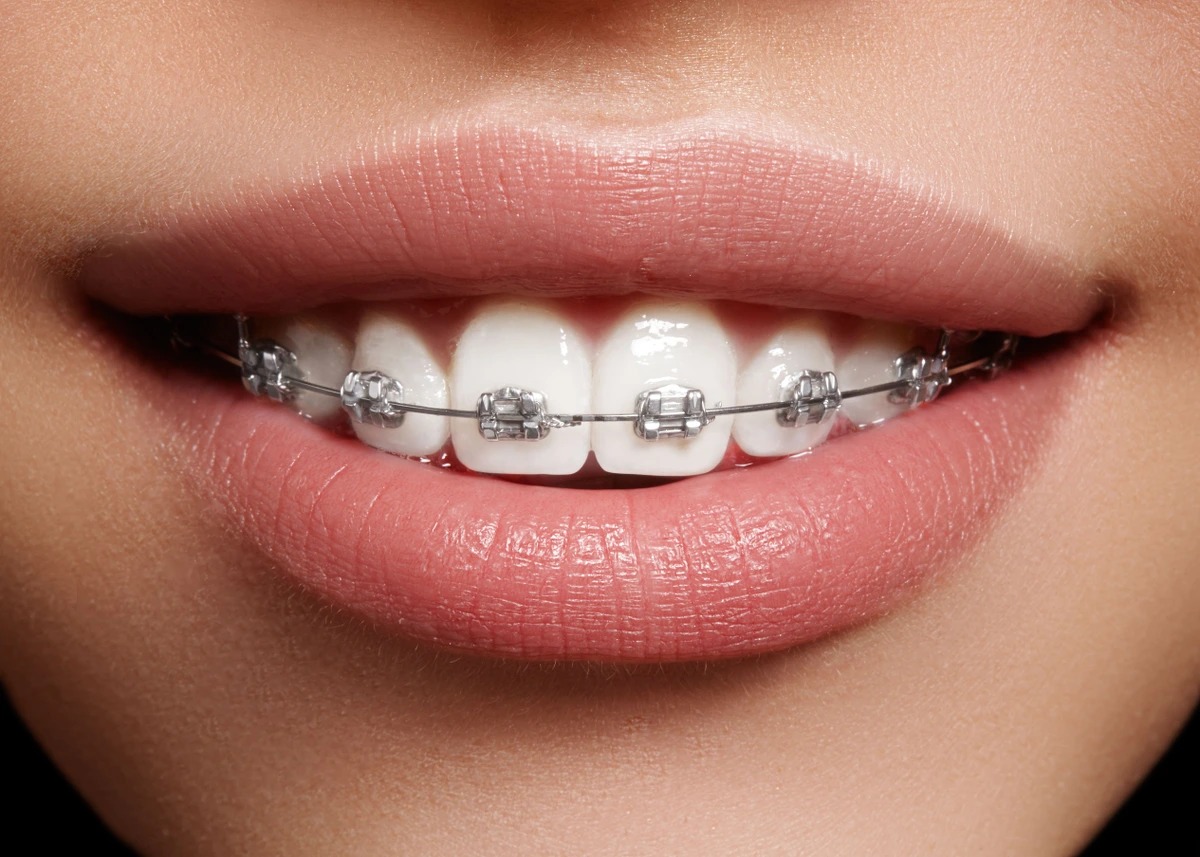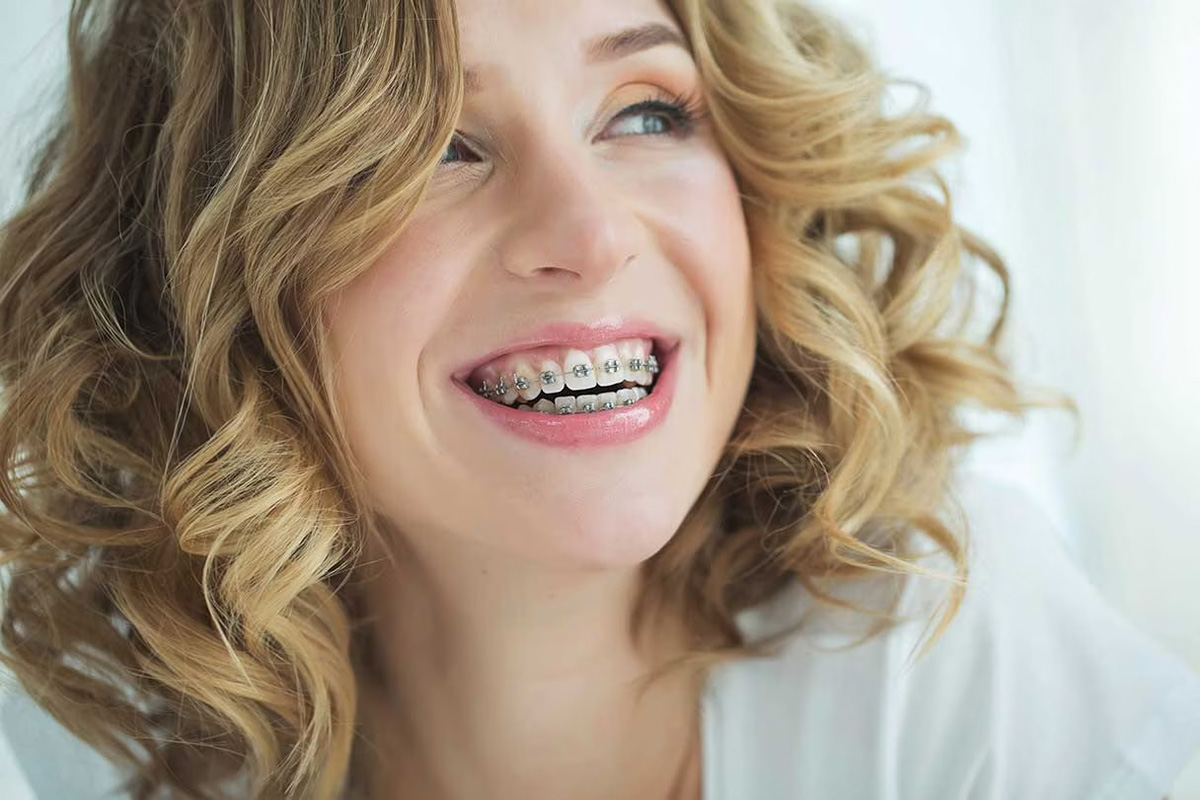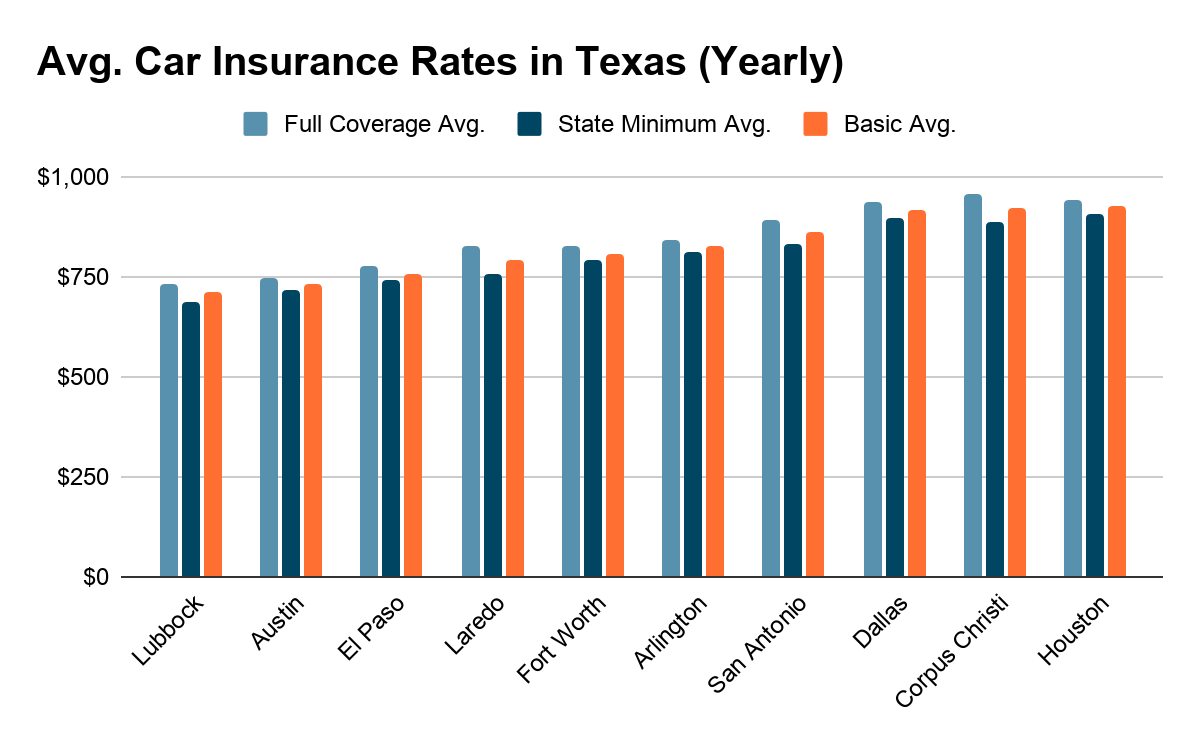Home>Finance>How Much Do Braces Cost In Texas With Insurance?


Finance
How Much Do Braces Cost In Texas With Insurance?
Published: November 20, 2023
Find out the cost of braces in Texas with insurance coverage and explore financing options for a confident smile. Discover affordable orthodontic solutions with our comprehensive guide.
(Many of the links in this article redirect to a specific reviewed product. Your purchase of these products through affiliate links helps to generate commission for LiveWell, at no extra cost. Learn more)
Table of Contents
Introduction
Getting braces is a common orthodontic treatment that can help straighten teeth and improve overall dental health. However, one of the major concerns for individuals considering braces is the cost. In Texas, the cost of braces can vary depending on several factors, including the type of braces and insurance coverage.
Braces are not only a cosmetic improvement but also an investment in your oral health. They can correct misaligned teeth, improve your bite, and prevent future dental issues. While the benefits are clear, the financial aspect can be overwhelming for some.
Fortunately, having insurance coverage can greatly alleviate the cost burden associated with braces. Insurance plans that include orthodontic coverage can provide financial assistance for those seeking orthodontic treatment. However, understanding the specifics of your insurance coverage is crucial to ensure you are adequately prepared for the costs.
In this article, we will discuss the cost of braces in Texas with insurance coverage. We will delve into different types of braces, the importance of insurance coverage, factors affecting the cost, average cost with insurance, and provide tips for managing the expenses. By the end, you will have a clearer understanding of what to expect and how to navigate the financial aspects of getting braces in Texas.
Overview of Braces
Braces are orthodontic appliances that are used to correct various dental issues, such as overcrowded or misaligned teeth, crooked teeth, overbites, underbites, and crossbites. They work by applying continuous pressure on the teeth, gradually shifting them into the desired position over time.
Traditional braces consist of metal brackets that are bonded to the teeth and connected by wires. These wires are adjusted periodically by an orthodontist to guide the teeth into proper alignment. While metal braces are the most common and affordable option, they can be visually noticeable.
In recent years, there have been advancements in orthodontic technology that offer more discreet options for those concerned about the appearance of braces. Ceramic braces are made of tooth-colored brackets and are less visible than traditional metal braces. Another popular option is Invisalign, a system that uses a series of clear, removable aligners to gradually move the teeth into the desired position.
It’s important to note that the type of braces recommended for an individual will depend on their specific dental needs and the recommendation of their orthodontist. Factors such as the severity of the dental issue, age, oral hygiene, and personal preferences will be taken into consideration when determining the most suitable type of braces.
Braces are usually worn for an extended period of time, typically ranging from 1 to 3 years, depending on the complexity of the case. Regular visits to the orthodontist are necessary for adjustments, monitoring progress, and ensuring proper oral hygiene.
It’s worth mentioning that braces not only enhance the appearance of your smile but also improve your overall dental health. Properly aligned teeth make it easier to clean and maintain good oral hygiene, reducing the risk of tooth decay, gum disease, and other dental problems in the long run.
Types of Braces
When it comes to getting braces, there are several different types to choose from. The type of braces recommended for an individual will depend on their specific dental needs and preferences. Let’s explore some of the most common types of braces:
- Metal Braces: Traditional metal braces are the most common and widely used type of braces. They consist of metal brackets that are bonded to the teeth and connected by wires. While they are visible, metal braces are known for their durability and effectiveness in straightening teeth.
- Ceramic Braces: These braces are similar in structure to metal braces, but the brackets are made of tooth-colored ceramic material that blends in with the natural color of the teeth. This makes them less noticeable than metal braces and a popular choice among individuals who want a more discreet option.
- Invisalign: Invisalign is a popular alternative to traditional braces. It uses a series of clear, removable aligners to gradually move the teeth into the desired position. Invisalign aligners are virtually invisible, making them a great option for those who prefer a more discreet treatment. They also offer the convenience of being removable, allowing for easier brushing, flossing, and eating.
- Lingual Braces: Lingual braces are similar to traditional metal braces in terms of structure, but they are placed on the backside of the teeth, making them virtually invisible. These braces are custom-made to fit the contours of the individual’s teeth and are a great option for those who want the effectiveness of traditional braces without the visible appearance.
- Self-Ligating Braces: Self-ligating braces are similar to traditional braces, but they use a slide mechanism rather than elastic bands to hold the wire in place. This reduces friction and allows for easier and more comfortable tooth movement. Self-ligating braces are known for shorter treatment times and fewer adjustments needed.
It’s important to consult with an orthodontist who can evaluate your specific needs and recommend the most suitable type of braces for you. Keep in mind that each type of braces has its own advantages and considerations, so it’s crucial to discuss your goals and concerns with a dental professional.
Importance of Insurance Coverage
Insurance coverage plays a crucial role in making orthodontic treatment, such as braces, more accessible and affordable for individuals and families. Here are some key reasons why having insurance coverage is important when considering braces:
- Financial Assistance: Braces can be a significant investment, and insurance coverage helps alleviate the financial burden by providing partial or full coverage for orthodontic treatment. This can make braces more affordable and accessible for those who might not be able to afford the full cost out of pocket.
- Improved Access to Treatment: With insurance coverage, individuals have greater access to quality orthodontic care. They can choose from a wider range of orthodontists and clinics that accept their insurance plan, ensuring they receive treatment from qualified professionals.
- Early Intervention: Insurance coverage for braces often includes coverage for early orthodontic intervention. This means that children and teenagers can receive timely treatment to address dental issues before they become more severe, leading to better long-term outcomes and potentially avoiding more extensive and costly treatments in the future.
- Comprehensive Coverage: Orthodontic insurance coverage not only includes the cost of braces themselves but also covers various associated expenses. This may include X-rays, consultations, adjustments, and even retainers or other post-braces treatment to maintain the results.
- Peace of Mind: Knowing that you have insurance coverage for orthodontic treatment can provide peace of mind. It removes the worry of the financial burden associated with braces, allowing individuals to focus on their dental health and achieving the best outcomes.
It’s essential to thoroughly review your insurance policy to understand the specific coverage for orthodontic treatment, including any limitations, deductibles, or waiting periods. This will help you make informed decisions and plan for the financial aspects of getting braces.
If you don’t currently have insurance coverage for orthodontic treatment, it may be worth exploring insurance options that include orthodontic coverage or considering alternative financing options offered by orthodontic clinics. Some clinics offer payment plans or financing options that can help spread out the cost of braces over time.
Remember, orthodontic treatment is an investment in your dental health and can have long-lasting benefits. While insurance coverage provides financial assistance, it’s important to prioritize your oral health and seek the treatment that best meets your needs.
Understanding Orthodontic Insurance Coverage in Texas
When it comes to orthodontic treatment like braces, understanding your insurance coverage is essential to properly plan for the associated costs. Here are some key points to consider when assessing your orthodontic insurance coverage in Texas:
- Check Your Policy: Start by reviewing your insurance policy to determine if it includes coverage for orthodontic treatment. Look for specific details about coverage limits, deductibles, waiting periods, and any exclusions that may apply.
- Age Limitations: Some insurance plans have age limitations for orthodontic coverage. It’s important to know if there are any age restrictions for coverage eligibility. Typically, coverage is more common for children and teenagers, but some plans may cover adults as well.
- Pre-Authorization Requirements: Certain insurance plans may require pre-authorization or pre-approval before starting orthodontic treatment. Make sure to understand any necessary steps, such as providing documentation or getting a referral from your dentist, to ensure that your treatment will be covered.
- Coverage Percentage: The percentage of coverage provided by insurance plans for orthodontic treatment can vary. Some plans may cover a certain percentage of the total cost, while others may offer a fixed-dollar amount. Be aware of the coverage percentage to determine your out-of-pocket expenses.
- Maximum Benefit: Insurance plans often have a maximum benefit amount for orthodontic treatment. This is the total amount they will pay towards the cost of braces. It’s important to know the maximum benefit allowed under your plan and how it may impact your overall costs.
- In-Network Providers: Insurance plans often have a list of preferred or in-network orthodontists and dental clinics. Choosing an in-network provider can help maximize your insurance benefits and reduce your out-of-pocket expenses. However, if you have a specific orthodontist in mind who is not in-network, you may still have coverage but at a different reimbursement rate.
- Claims Process: Familiarize yourself with the claims process for orthodontic treatment. Understand what documentation is required, how to submit claims, and the timeframe for reimbursement. Following the proper claims process will ensure a smoother experience and timely reimbursement.
It’s important to closely read and understand the terms and conditions of your orthodontic insurance coverage. If you have any questions or need clarification, don’t hesitate to reach out to your insurance provider for assistance. They can provide specific details about your coverage and help guide you through the process.
Remember, orthodontic insurance coverage is designed to assist with the cost of treatment, but it’s essential to be aware of any limitations or out-of-pocket expenses that you may be responsible for.
Factors Affecting the Cost of Braces in Texas
The cost of braces in Texas can vary depending on several factors. Understanding these factors can give you a better idea of what to expect in terms of pricing. Here are some key factors that can affect the cost of braces:
- Type of Braces: The type of braces you choose will play a significant role in the overall cost. Traditional metal braces are generally the most affordable option, while more advanced options like ceramic braces or Invisalign may be more expensive due to their discreet appearance or advanced technology.
- Orthodontist’s Experience and Expertise: The experience and expertise of the orthodontist can also impact the cost. Highly experienced orthodontists may charge higher fees due to their specialized skills and reputation. However, it’s important to prioritize finding an orthodontist who is qualified and has a track record of successful treatments rather than solely focusing on cost.
- Complexity of the Case: The complexity of your orthodontic case can influence the cost of braces. If your teeth require extensive realignment or additional treatments, such as tooth extractions or jaw surgery, the overall cost may be higher as more time and resources may be required to achieve the desired results.
- Location: The cost of braces can vary based on the geographic location within Texas. In urban areas or areas with a higher cost of living, orthodontic treatment may be more expensive compared to rural or less densely populated areas.
- Additional Procedures: In some cases, additional dental procedures or treatments may be necessary before or during orthodontic treatment. This can include procedures such as fillings, extractions, or periodontal treatments. The cost of these additional procedures will add to the overall cost of braces.
- Insurance Coverage: The extent of your insurance coverage for orthodontic treatment will impact the out-of-pocket expenses. Insurance plans may cover a portion of the cost or have a maximum benefit limit. Understanding your insurance policy’s coverage terms and limits is crucial in determining the portion you’ll need to pay.
It’s essential to have a consultation with an orthodontist who can evaluate your specific needs and provide you with a personalized treatment plan and an accurate cost estimate. They can discuss the factors affecting the cost in your particular case and help you make an informed decision.
Remember, while cost is a factor to consider, the quality of treatment and the expertise of the orthodontist should be prioritized to ensure the best possible outcomes for your orthodontic journey.
Average Cost of Braces in Texas with Insurance
The cost of braces in Texas can vary depending on several factors, but having insurance coverage can significantly help manage the expenses. While it is difficult to provide an exact average cost due to the various factors involved, we can provide a general estimate of what you can expect when considering braces in Texas with insurance coverage.
With insurance coverage, the out-of-pocket cost for braces in Texas can range from $1,000 to $5,000 on average. This range includes deductibles, copayments, and any additional expenses that may not be covered by insurance. However, it is important to note that this is just an estimate, and the actual cost can vary based on the specific details of your insurance plan and treatment needs.
Insurance coverage for orthodontic treatment typically includes a specific percentage of coverage, such as 50% or 80%, up to a maximum benefit amount. For example, if your insurance covers 50% of orthodontic treatment and your total treatment cost is $4,000, your out-of-pocket expenses would be $2,000, assuming your maximum benefit is not exceeded.
It’s crucial to thoroughly review your insurance policy to understand the specific coverage details, as there may be limitations, waiting periods, or additional requirements for eligibility. Consulting with your insurance provider or orthodontist can help you better understand the cost breakdown and coverage in your particular case.
Keep in mind that the cost estimates provided here are for traditional metal braces. The cost can vary if you choose a different type of braces, such as ceramic braces or Invisalign. These options may have a higher price point due to their advanced technology or discreet appearance.
Remember to inquire about any additional expenses associated with braces, such as X-rays, consultations, adjustments, or retainers, as these may not be fully covered by insurance and can impact the overall cost.
Overall, having insurance coverage for orthodontic treatment can significantly reduce the financial burden associated with braces. However, it is essential to familiarize yourself with the specific coverage terms and limitations of your insurance plan to ensure you have a clear understanding of the costs and benefits involved.
Consulting with an orthodontist is key to receiving a personalized cost estimate based on your specific treatment needs and insurance coverage. They can guide you through the financial aspects of getting braces and provide you with the most accurate estimate based on your individual situation.
Tips for Managing the Costs of Braces
The cost of braces can be a significant investment, but there are several ways to manage and reduce the financial impact. Here are some tips to help you navigate the costs associated with braces:
- Review Your Insurance Coverage: Understand the details of your insurance coverage for orthodontic treatment. Check the coverage percentage, deductible, and maximum benefit amount. This will give you a clear idea of how much you can expect to pay out of pocket.
- Explore Financing Options: Many orthodontic clinics offer financing options that allow you to spread out the cost of braces over time. Research various financing plans and consider one that fits your budget. Find out if there are any interest-free or low-interest options available.
- Use Flexible Spending Accounts (FSA) or Health Savings Accounts (HSA): If you have an FSA or HSA, you can use these pre-tax funds to cover orthodontic expenses. Maximize these accounts to help mitigate the financial burden of braces.
- Consider Different Types of Braces: While traditional metal braces are the most affordable option, alternative options like ceramic braces or Invisalign may be more expensive. However, they may also provide aesthetic advantages. Discuss the pros and cons of each type with your orthodontist to determine the best balance of cost and preference.
- Ask About Discounts: Inquire with your orthodontist about any available discounts or promotional offers. Some clinics may offer discounts for paying upfront or provide special pricing during certain times of the year. Taking advantage of these opportunities can help reduce the overall cost.
- Take Care of Your Braces: Proper oral hygiene and following the orthodontist’s instructions can help prevent any additional expenses or complications during your treatment. Maintaining good oral hygiene can minimize the risk of tooth decay or other issues that may require additional dental treatments.
- Keep Up with Regular Appointments: Attending scheduled appointments and following the treatment plan can help ensure that your braces treatment progresses smoothly. This can prevent any delays or extended treatment periods, potentially saving you from incurring additional costs.
- Ask for a Detailed Treatment Plan: Request a comprehensive treatment plan from your orthodontist, including a breakdown of the associated costs. Having a clear understanding of what to expect throughout the treatment process can help you financially plan ahead.
- Research Several Orthodontists: It’s beneficial to consult with multiple orthodontists to get different cost estimates. Compare treatment plans and fees to find the most competitive pricing without compromising on the quality of care.
- Plan Ahead: If you foresee that you will need braces in the future, start saving and planning early. Having a financial reserve or setting up a separate savings account can help you better manage the costs when the time comes.
Remember, getting braces is an investment in your dental health and overall well-being. Prioritize finding a qualified orthodontist who can provide the necessary treatment and support throughout your journey. By employing these tips and exploring your options, you can effectively manage the costs associated with braces.
Conclusion
Braces are an important orthodontic treatment that can provide numerous benefits, including improved oral health and a confident, beautiful smile. While the cost of braces in Texas can seem overwhelming, understanding the factors that affect the cost and exploring insurance coverage options can help make it more manageable.
Having insurance coverage for orthodontic treatment can significantly alleviate the financial burden associated with braces. It is essential to review your insurance policy, understand the coverage details, and be aware of any limitations or requirements. This will ensure that you are prepared for the costs and can make informed decisions about your orthodontic treatment.
Additionally, exploring financing options, considering different types of braces, and taking advantage of available discounts can further aid in managing the costs. Proper oral hygiene, regular appointments, and following the orthodontist’s instructions will minimize the risk of additional expenses during treatment.
By planning ahead, researching various orthodontists, and seeking cost estimates from multiple sources, you can find the best balance between quality care and affordability.
As you embark on your braces journey, remember that the investment in your dental health and overall well-being is well worth it. The long-term benefits of having properly aligned teeth and a healthy smile are invaluable.
Consult with a qualified orthodontist who can guide you through the treatment process, help you understand the costs, and provide the necessary care to achieve the best possible results.
While the cost of braces may initially seem daunting, with careful planning and consideration of the resources available to you, you can successfully manage the financial aspect of your orthodontic treatment. Prioritize your oral health and invest in a beautiful, confident smile that will last a lifetime.














